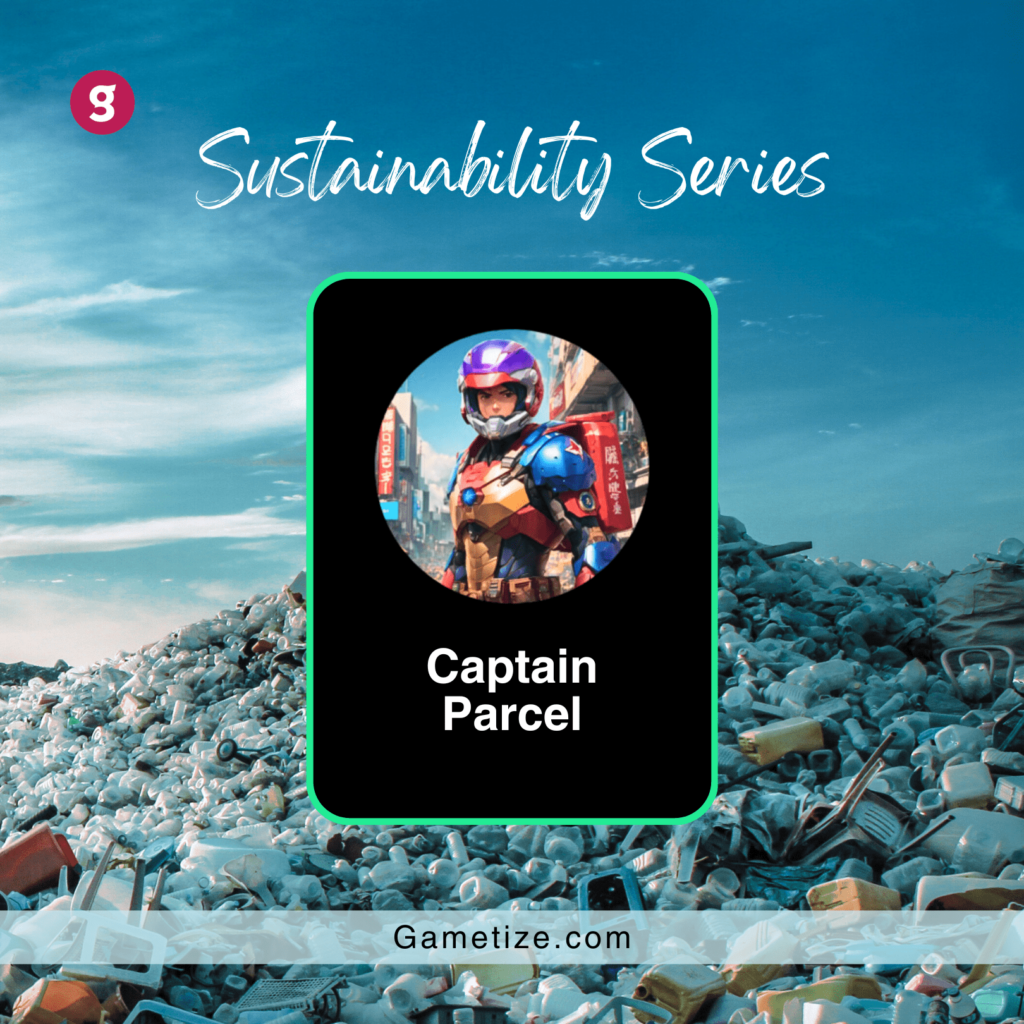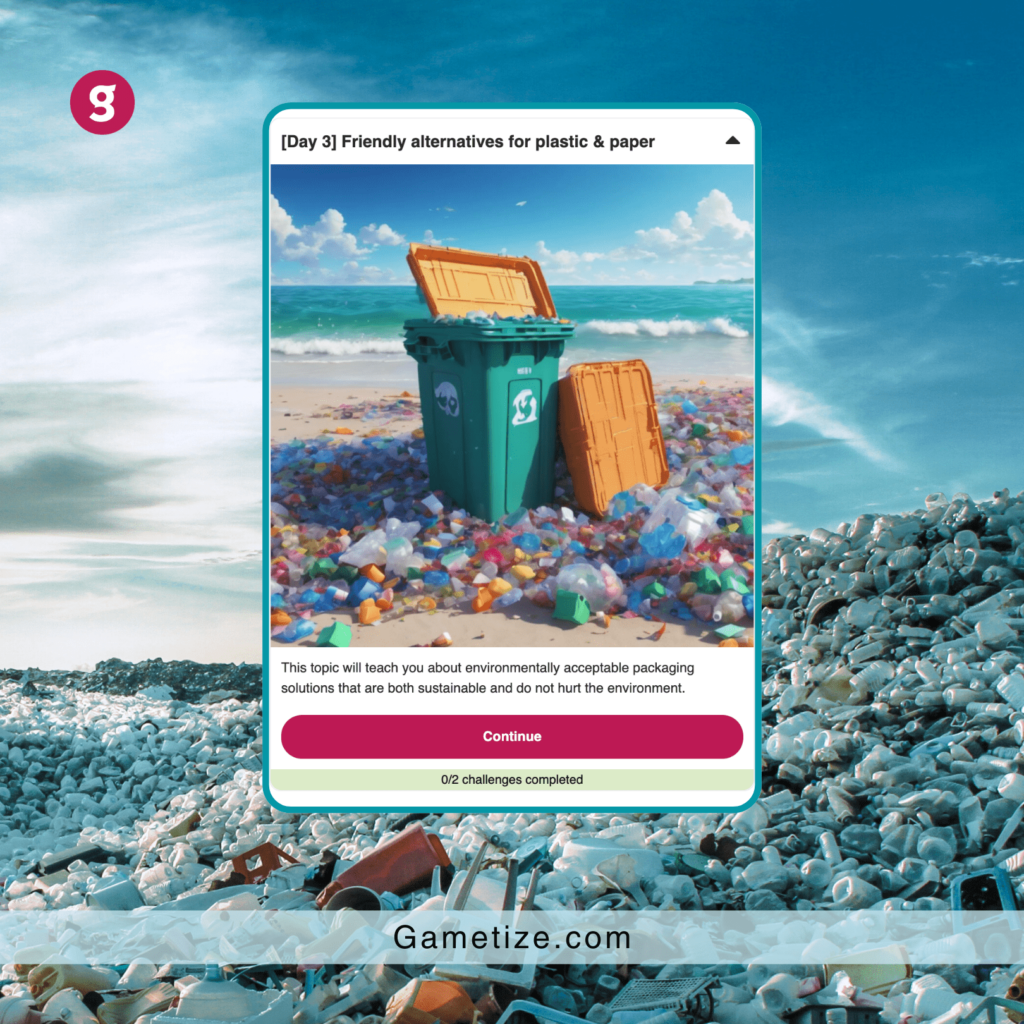1. 6D Playbook
Defining the Problem
The rapid growth of online shopping has led to a significant environmental issue: excessive e-commerce packaging. E-commerce contributes significantly to plastic waste, with 40% of all plastic production used in packaging (Organisation for Economic Co-operation and Development, n.d.). This leads to 19-23 million tonnes of plastic waste contaminating water ecosystems and landfills (United Nation Environment Programme, n.d.). While paper packaging is better for recycling and biodegradability, it still has drawbacks, such as the need to harvest 3 billion trees annually (Owens, 2022). Therefore, Captain Parcel aims to reduce and improve packaging practices to protect the environment while promoting sustainable businesses.
Determining Goals
Our goal is to educate our stakeholders and their audiences about sustainable e-commerce practices and to take action to reduce packaging waste. Furthermore, we want our stakeholders to participate in our game to gain sustainable badges that will help them be identified as a sustainable business, thereby increasing their reputation. Ultimately, this helps to boost their reputation and keep them motivated to minimise packaging wastage. A personality quiz will be put in at the start of the game and at the end of the game to measure the success. The aim is to turn 75% of Sustainability Explorers into Green Innovators, 80% of Eco Neutrals to Eco-Conscious, and 50% of Traditionalists to Eco-Neutrals.
Deciding Target Behaviours and Emotions
The target behaviour is to have our players accomplish the tasks, develop the habit, and be rewarded appropriately through our game. This allows them to take a trial-and-error approach to their business, allowing them to improve their reputation by going green and lowering their expenses while increasing efficiency. The target emotion is that we hope they will feel enlightened, proud of themselves and concerned about the environment.
Describing and Profiling Players
The target players will be E- commerce Platform Sellers.
Designing the Game
A superhero tale that features “Captain Parcel”, who brings users on his mission to address the increasingly urgent challenge of plastic and paper packaging waste through an educational and entertainment focused learning. Extrinsic and intrinsic rewards are awarded to players accordingly:
- Intrinsic:
- Players rewarded with sustainable badge presented on their profile on the platform
- Extrinsic
- Players ranked on matrix, listed higher on searches
- Leaderboard with different tiers with each tier equivalent to respective reward
Diagnosing and Analyzing the Content
E-commerce packaging waste is a huge problem and my goals are realistic. The games are very focused and have wow factors such as badges that are given to recognise sustainable sellers. The game challenges are appealing and relevant to our goals. Players will also be able to easily understand them and can execute them with clarity.
2. Addressing a real world challenge
We are addressing the issue of waste production from packaging which is one of the leading causes of wastage pollution. According to the Environmental Protection Agency around 30% of the total waste in the United States, one of the biggest countries, comes from packaging wastage (Environmental and Energy Study Institute, n.d.). This thus shows that this is a real world that needs to be tackled.
We thus tackle this by targeting a community that produces a high level of packaging wastage and has a significant negative impact on our environment. Our game serves as both an educational resource and a business proposal for e-commerce platforms to adopt. Through our game, sellers will be more informed about the various ways to reduce packaging wastage which is one of the leading reasons for wastage.
By e-commerce platforms adopting this game, we hope that it will soon become the norm for the e-commerce industry and could potentially help reduce the amount of pollution that we would see in future years.
3. Learning and reflection
We were concerned with this issue as it was something that we are seeing in our daily lives and see how it is impacting our environment. This issue has also got us to understand how difficult it is for companies to change their practices and ways that we can help alleviate their burden.
Doing the 6Ds to plan our solution was very helpful to our group project. From defining and writing our problem statement, it provided clarity for our team and aligned our team’s vision. Without a valid problem statement, it will render the entire project useless. Our team has thus learnt that writing a good problem statement is crucial as it is the foundation of our team’s future steps in crafting the solution. Next, our team collectively wrote the goals we wanted to achieve to solve the problem statement. By setting clear and shared goals, our team now has a shared vision and is focused on achieving these goals through our project. Next, we have to choose the appropriate target audience in order to spark meaningful change in the e-commerce industry. We realised that the root of the problem was logistic partners of e-commerce platforms since they have a strong influence in how products are being packaged and delivered. Thus, our team finalised on targeting logistic partners of e-commerce platforms and aims to spur the change in industry practices by changing the packaging requirements for the sellers to ship their products.
4. Teaser
1. Play the game first.
2. Use the Template game for your own initiatives.
Credits: [AY2023/24] G5 Team 1 – Belinda Tan Zi Xuan, Amy Teo Kay’Ee, Avinesh Sangaraju, Ham Yan Choon Glenn, Yeo Jing Xi, Cheong Chui Mun Felicia, Ang Jia Jun Darius



